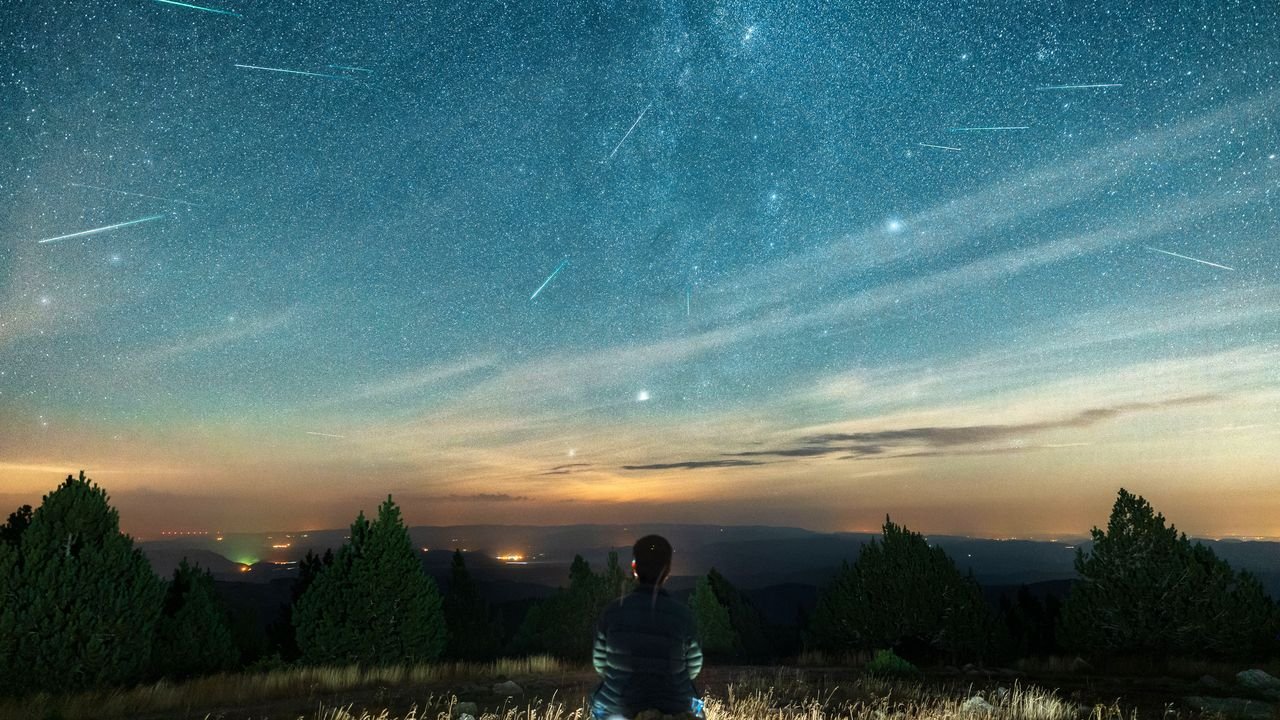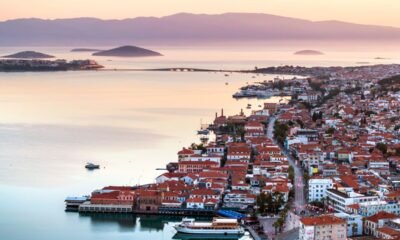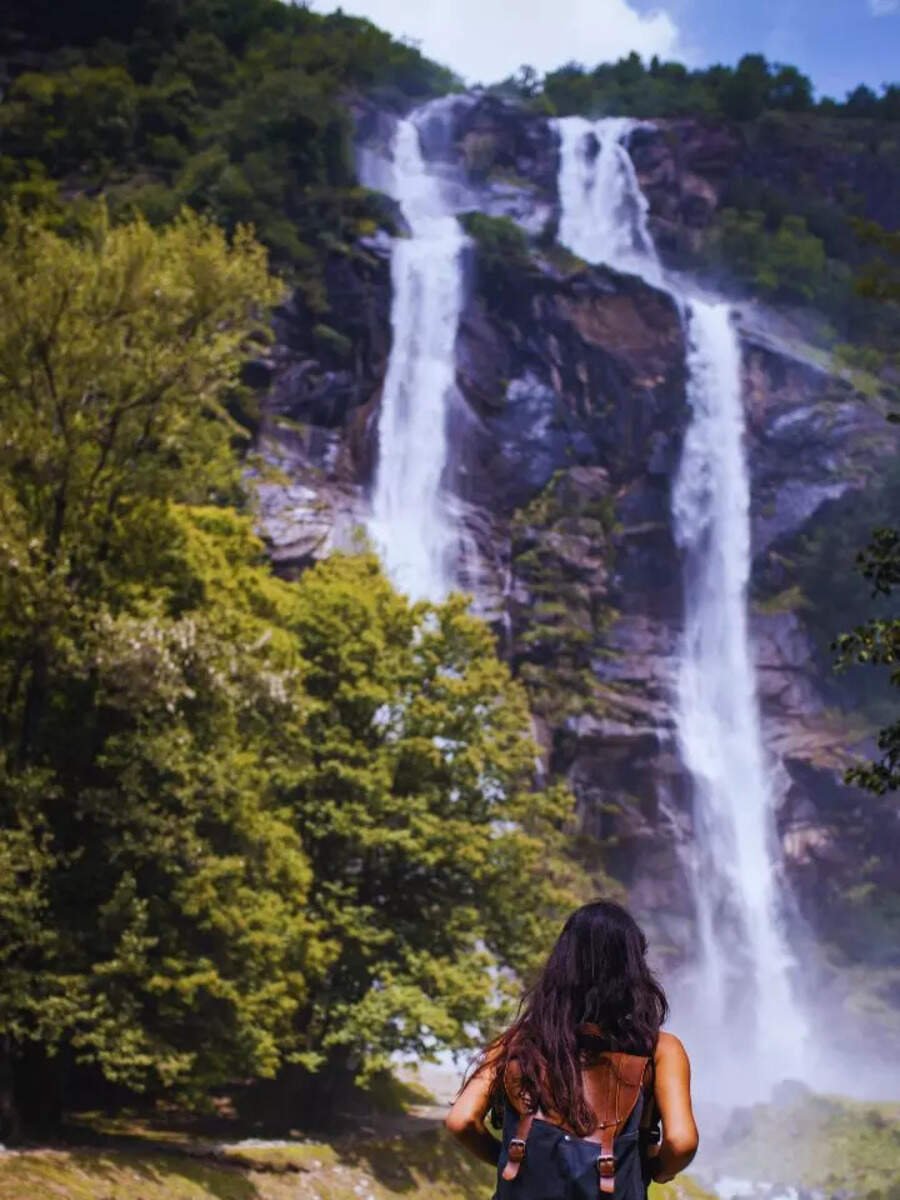Solo Travellers
How to See the Perseid Meteor Shower This Week

It’s August, which means it’s time to dust off your lawn chairs and get ready for the best meteor shower of the summer. The annual Perseid Meteor Shower puts on one of the year’s most dazzling displays of shooting stars, with rates of up to 100 meteors per hour under perfect viewing conditions. This year, fewer meteors will be visible due to light interference from our good neighbor, the moon. But don’t worry—you’ll still be able to enjoy the spectacle. Here’s what you need to know about viewing the 2025 Perseid Meteor Shower.
When is the Perseid Meteor Shower?
In 2025, the Perseid Meteor Shower runs from July 17 through August 29, with peak activity taking place from the late evening of August 12 through the early morning of August 13.
Generally speaking, the best time to see the Perseids is just before dawn, when their radiant, or the point from which they appear to emanate, is at its highest point in the night sky. (When the radiant is lower in the sky, many Perseid meteors will disappear below the horizon.) So set your alarm for 3 a.m.—or grab some friends for a late-night viewing party.
Unfortunately, a bright waning gibbous moon will interfere with this year’s meteor shower. It will rise in the late evening and remain in the sky throughout the Perseids’ peak, creating natural light pollution and drowning out all but the brightest meteors.
The good news is that the Perseids are known for “fireballs,” or exceptionally bright meteors, so you should still be able to see plenty of shooting stars. Per the American Meteor Society, you can expect to see between 10 and 20 meteors per hour during this year’s peak.
Where can I see the Perseids 2025?
The Perseid Meteor Shower is best viewed from the Northern Hemisphere—you can see it from just about anywhere. In the Southern Hemisphere, the Perseids will only be visible in the low to mid-latitudes (closer to the equator).
No matter where you’re located, the key to a brilliant Perseids show is clear, dark skies. Those who live in rural areas are lucky—they might be able to spot shooting stars right in their backyards. But for those who live in suburban or urban areas, it’s worth traveling to a more remote area devoid of light pollution.
For the absolute best Perseids viewing, pay a visit to any of the 230-plus International Dark Sky Places around the world. This prestigious designation is awarded by DarkSky International, a nonprofit that seeks to protect our dark skies from artificial light pollution.
Don’t forget to check the weather forecast, too. Clouds will certainly reduce or eliminate Perseid viewing opportunities, so you might need to relocate to a cloud-free location.
What causes the Perseid Meteor Shower?
Meteor showers occur when tiny bits of rock, ice, or dust from the debris trails of comets or asteroids burn up in Earth’s atmosphere, creating a series of bright streaks across the sky. (No, shooting stars aren’t actually stars at all!)
The debris that creates the Perseid Meteor Shower comes from the comet 109/PSwift-Tuttle, which orbits the sun every 133 years. Fun fact: Perseid meteors hit the atmosphere at an average speed of 37 miles per second.
The Perseids derive their name from the constellation Perseus, which is the radiant point of the meteor shower. If you trace back the path of all Perseid meteors in the direction they originated from, you’ll find yourself in Perseus.
Viewing tips for the Perseid Meteor Shower
Once you’ve identified a dark, cloud-free spot near you, look for a wide-open area with few trees or structures impeding your view of the sky. Simply set up a lawn chair or picnic blanket, lean back, and let your eyes adjust to the darkness. Soon enough, you should be able to watch fireballs streak across the sky.
And one more tip: Don’t worry about binoculars or telescopes. They’ll actually hinder your viewing experience, as they narrow your field of view. The wider your view, the more meteors you’ll be able to spot.
This story has been updated with new information since its original publication date.
Solo Travellers
Top 10 safest countries for solo women travellers (WPS Report) – The Times of India
Solo Travellers
Moreish Murcia: a gastronomic journey through south-east Spain | Murcia holidays

‘My grandmother, a widow, sold her livestock in the 1940s and bought this land to start a vineyard. That’s where she made the wine,” says Pepa Fernández proudly, pointing towards a weathered building no bigger than a garden shed. We’re standing between two fields on a chalky road skirted by poppies, daisies and thistles. One field is lined with neat rows of lush vines, the other with small bush vines soon to bear monastrell grapes (the most dominant variety in these parts). In the distance, a sandy-coloured mountain range peppered with pine trees sits beneath a cloudless blue sky.
Pocket-sized Pepa is the face of Bodega Balcona, a family-run organic winery in Spain’s south-eastern province of Murcia. The vineyard lies in the picturesque Aceniche valley, in Bullas – one of Murcia’s three wine DOPs (denominaciónes de origen protegida), alongside Yecla and Jumilla. Each has its own wine route, scattered with museums and vineyards.
My girlfriend and I are in the area to explore Murcia’s food and drink scene after a tipoff from an old friend who grew up in the city (Murcia is the name of both the province and its capital). The province hosted two of Spain’s most prestigious culinary events last year: the Repsol Guide Soles gala and the Michelin Guide gala.
“Murcia is one of the best food cities in Spain,” a suave Granada-based gentleman in a fedora tells me on the way to the tasting room. We soon learn that its wine is pretty special, too, as we make our way through Bodega Balcona’s roster of earthy natural wines. Each glass is paired with national and regional dishes: cold cuts, local cheeses, almonds, tuna empanadas, and a Murcian favourite made by Pepa’s nephew, pastel de carne – a hearty meat and egg pie topped with flaky pastry.
After, we drive to the nearby Salto del Usero waterfall, where kids are paddling and teenagers are sunning themselves on rocks, like lizards. Following a quick dip in the chilly plunge pool, we go to meet Paco Franciso Muñoz Reales, who runs an organic farm nearby with his German wife, Heidi.
Laid-back and softly spoken, Paco is part of a local cooperative of growers, including Pepa, using ecological farming methods. He explains there was a little bit of tension with local farmers when he first started, but things have settled down. On a tour of his five-hectare estate, he shows me a seed bank tucked inside a pantry, rows of apricot, olive and lemon trees, and a tomato patch.
Nicknamed the garden of Europe, Murcia accounts for around 20% of Spain’s fruit and vegetable exports. This agricultural heritage stems from a vast network of fertile gardens, or huertos, that surround the city of Murcia, where baroque buildings, palm-lined riverbanks and buzzing tapas bars cluster around Plaza de las Flores. La Huerta de Murcia, as the fertile area is called, also influences local food culture, with Sundays traditionally reserved for family meals at rustic restaurants.
Each spring, the city also throws the Bando de la Huerta festival – a lively celebration of rural life where locals don traditional dress and feast on regional dishes. We arrive a few weeks later, so instead visit the rustic El Cañal Los Almillas restaurant, where we tuck into heaped platters of beef entrecote dusted with a layer of rock salt, and a fresh tomato salad with olives and lettuce, accompanied by plates of lemon (Murcianos squeeze lemon on everything). We finish with a classic Murcian dessert of crispy, deep-fried paparajotes – battered lemon leaves served with a dollop of ice-cream.
The restaurant is named after the city’s canal system, which are part of an irrigation system dating back to Moorish times. “Think of it as the Segura River being the heart and the canals the veins that deliver the blood,” our guide, Antonio, explains.
David López, the chef at the fine-dining restaurant Local de Ensayo, tells us these ancient systems are still in use today as he shows us around his huerto. López visits his patch daily, growing everything from lettuce, beans and cucumber to strawberries and aubergines. Fruit and vegetables feature prominently in traditional Murcian cooking, in dishes such as ensalada murciana (tomato salad with tuna, olives and egg) and arroz con verduras (rice with vegetables).
“It’s a way of life for me, somewhere I can bring the children to plant things and watch them grow,” López says while trudging through the mud, checking his crops. About 20% of the produce used in his restaurant comes from his garden, the rest being supplied by an ecological farmer with a stall at Verónicas market, which sells fruit, vegetables, meat, fish and olive oil to the city.
after newsletter promotion
López and his wife, Carmen, show us around the market, pointing out local delicacies like mújol (mullet), almendra marcona (almonds), langostino del Mar Menor (langoustines) and alficoz (a type of curly cucumber). We finish at Café Bar Verónicas, which to the untrained eye looks like any other neighbourhood bar: metal countertops, shelves of pickled vegetables and wine, and locals chatting loudly. However, framed newspaper reviews hint at something more.
It’s run by Samuel Ruiz and his wife, Isabel Torrecillas. The young, tattooed chef could be Spain’s Anthony Bourdain. Ruiz, who trained at the famed El Bulli, was responsible for one of Murcia’s most exciting restaurants, Kome, a tiny Japanese-style tavern. “They didn’t have social media. No website. Nothing. But people still queued down the street,” Torrecillas tells us. Ruiz decided to shut down Kome and return to his roots, opening a barra with a twist in the heart of town, she explains as a plate of caballito (little horse in Spanish) lands on the table. The popular local dish usually features deep-fried prawns, only here it’s made with fist-sized crayfish, shell and all. It’s followed by a good-sized bowl of marinera, a kind of Russian salad with anchovies, served with crisp bread and homemade mayo.
When I ask Ruiz what sauce he’s plating up, he squirts a dot on to the back of my hand. “Try it,” he grins confidently. It is a delicious homemade saffron mayonnaise with anchovy, lemon and garlic. A frozen cocktail with an umbrella appears moments later, sent from his other bar next door, Colmado San Julián.
We finish up and say our goodbyes before wandering over to López’s restaurant. As we enter, he vanishes without a word and we’re seated by a window peering into the kitchen. Dishes soon arrive at the table from his excellent tasting menu (from about £65), which champions local, seasonal ingredients. Standout plates include a wild mushroom dish packed with umami, a deep-flavoured red Calasparra rice with vegetables, and his excellent signature dessert, a cross between a flan and a crème brûlée (a favourite of the legendary Spanish food critic José Carlos Capel).
The next day we drive 45 minutes out of town to Casa Borrego – a cosy eight-room gastronomic hotel with soft bucolic rooms and a burbling beck outside. For dinner, we’re treated to an elevated take on Murcian cuisine, including pani puri balls exploding with tuna tartare, and a massive pan of rich rabbit rice. Retiring to bed, we’re lulled to sleep by the sound of trickling water. With our time in Murcia nearly up, the following day we zip back to the city to hunt down one last dish: zarangollo, a simple courgette-and-egg scramble. We find it at a traditional tapas bar called Bodegón Los Toneles – all jamón legs and chalkboard menus.
We end the trip as we began with a local tipple, this time at CaféLab. Asiático is a heady blend of condensed milk, Licor 43, cognac and spices – said to hail from Cartagena. Like Murcia’s cuisine, its richness lies in the subtle layers – each one revealing something original, unexpected and distinctly its own.
The trip was provided by Turismo de Murcia. Sercotel Amistad Murcia has doubles from around €60 room-only; Casa Borrego has doubles from €120 B&B
Solo Travellers
US retains travellers’ hearts, Virtuoso trends report shows

Meanwhile, safety emerged as a growing priority for travellers, with 75% of Virtuoso clients citing safety and security as of leading importance when planning travel, while 65% gave “an added layer of protection” as a top benefit of using an advisor. In line with this, Virtuoso reported a 76% increase in consumers seeking travel advisers via virtuoso.com.
Additionally, the research showed that autumn and holiday bookings were up 30% and 35% respectively, as well as the enduring popularity of “coolcations” – 79% of advisors reported that climate concerns were shaping client decisions.
Generational preferences are also shifting. While Gen Z and Millennials seek “meaning-making” experiences and nontraditional accommodations, Boomers are leading the charge against overtourism, making more sustainable choices. According to Virtuoso, 64% of high-end travellers said they are interested in making sustainable travel choices, with 42% willing to pay more for eco-friendly options.
Meanwhile, solo female travellers – dubbed “Wander Women” – are asserting their influence. Representing 68% of solo travellers, many are older women over 65 who are “redefining what solo travel looks like.”
-

 Brand Stories3 weeks ago
Brand Stories3 weeks agoBloom Hotels: A Modern Vision of Hospitality Redefining Travel
-

 Brand Stories2 weeks ago
Brand Stories2 weeks agoCheQin.ai sets a new standard for hotel booking with its AI capabilities: empowering travellers to bargain, choose the best, and book with clarity.
-

 Destinations & Things To Do3 weeks ago
Destinations & Things To Do3 weeks agoUntouched Destinations: Stunning Hidden Gems You Must Visit
-

 Destinations & Things To Do2 weeks ago
Destinations & Things To Do2 weeks agoThis Hidden Beach in India Glows at Night-But Only in One Secret Season
-

 AI in Travel3 weeks ago
AI in Travel3 weeks agoAI Travel Revolution: Must-Have Guide to the Best Experience
-

 Brand Stories1 month ago
Brand Stories1 month agoVoice AI Startup ElevenLabs Plans to Add Hubs Around the World
-

 Brand Stories1 month ago
Brand Stories1 month agoHow Elon Musk’s rogue Grok chatbot became a cautionary AI tale
-

 Brand Stories3 weeks ago
Brand Stories3 weeks agoContactless Hospitality: Why Remote Management Technology Is Key to Seamless Guest Experiences
-

 Asia Travel Pulse1 month ago
Asia Travel Pulse1 month agoLooking For Adventure In Asia? Here Are 7 Epic Destinations You Need To Experience At Least Once – Zee News
-

 AI in Travel1 month ago
AI in Travel1 month ago‘Will AI take my job?’ A trip to a Beijing fortune-telling bar to see what lies ahead | China














You must be logged in to post a comment Login